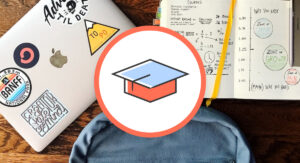Email was a lifeline for higher ed in 2020
With millions of higher ed students forced to make tough choices about their education during the pandemic, email communication volume and engagement spiked in March of 2020 and remained above 2019 volumes through the rest of the year. Remote learners, students delaying their education, and prospective students deciding what to do in the coming year all required a heavier amount of communication than normal.
These important audiences were and still are much more likely to open and click-through their emails than ever before, creating a unique opportunity for higher ed marketing teams. With two different vaccines showing potential for distribution in the first half of 2021, there will be more uncertainty than ever when it comes to higher ed. Rather than keep going with the status quo, savvy higher ed marketers can use this time to collect valuable information about their audiences, segment for better relevance, and deliver engaging content that can keep engagement high for years to come.
Collecting data for now and later
Many higher ed email marketers scrambled in 2020 to provide basic information to a wide audience. Emails about Covid-19 safety and preparedness, plans for opening in the fall, and distance learning were sent out to wide audiences since they initially applied to many people. By now, however, students and their families have made choices, such as to delay a year or learn online. Collecting data about these unique groups will provide value in 2021 and for much longer.
Williams College, for example, created an email group for “gap year” students, providing information that will keep the students engaged while they delay their schooling. This ensures that there are bonds formed that will keep students loyal, rather than change their minds about where or how they want to attend school next fall. The gap year students will not become “normal” students once they matriculate in 2021, they are a unique group who might have unique behaviors that the school should know about. Similarly, students who stayed home across the country have been involved in formal and informal groups, continuing to socialize at a distance.
Higher ed marketers can collect information such as how email is being used to keep in touch with peers, what aspects of distance learning or the gap year have worked well or have been most challenging, and what their expectations are for next year. Those insights can be used now for campaigns about coping with uncertainty and sharing personal stories that other students can relate to as well. When things do go “back to normal,” those insights will make that content particularly relevant. For example, students who learned from home might be more excited to go back than those who have been on campus and may be more responsive to marketing campaigns in the fall, which is an opportunity for more personalized or targeted campaigns.
Segments that last a lifetime
Many things about education changed in 2020 that may never return to normal. Many higher ed institutions invested in distance learning and might offer more of those offerings going forward. Alumni who missed graduation might want to come back for more events. With a strong data-collection strategy in place to understand as much as possible about these groups, marketers can also create highly segmented campaigns throughout the lifelong relationship.
Higher ed has the unusual position of having connection to someone from their teen years through their entire lifetime, and segmentation can ensure that higher ed marketers can deliver highly relevant email to specific groups, such as distance learners or student athletes who missed a season.
Texas A&M University segments their many different email lists in order to reduce the total number of emails sent and increase relevance to the people receiving the right emails. For example, they have a list for The Association of Former Students, and is used with a lifelong relationship in mind, knowing that many alumni may not give for ten or twenty years after graduation.
Content that creates strong bonds
In 2020, many students and alumni are craving connections - to be on campus, see old friends and get together with teams and clubs. When they can’t be there in person, higher ed marketers can get creative to give them the emotional and personal connection that they’re looking for in other ways.
Texas A&M makes sure to send emails to help with important life events. If someone moves, they email information about the local alumni chapter. If someone is out of work, they email a link to their careers center, and when they have a new baby, the university emails their congratulations and mails them an Augie bib.
These creative, relevant campaigns keep people connected and can drive even more engagement in the future.
MOST RECENT ARTICLES
Want to engage your audience and grow your brand? Try Emma's robust easy-to-use product today.












